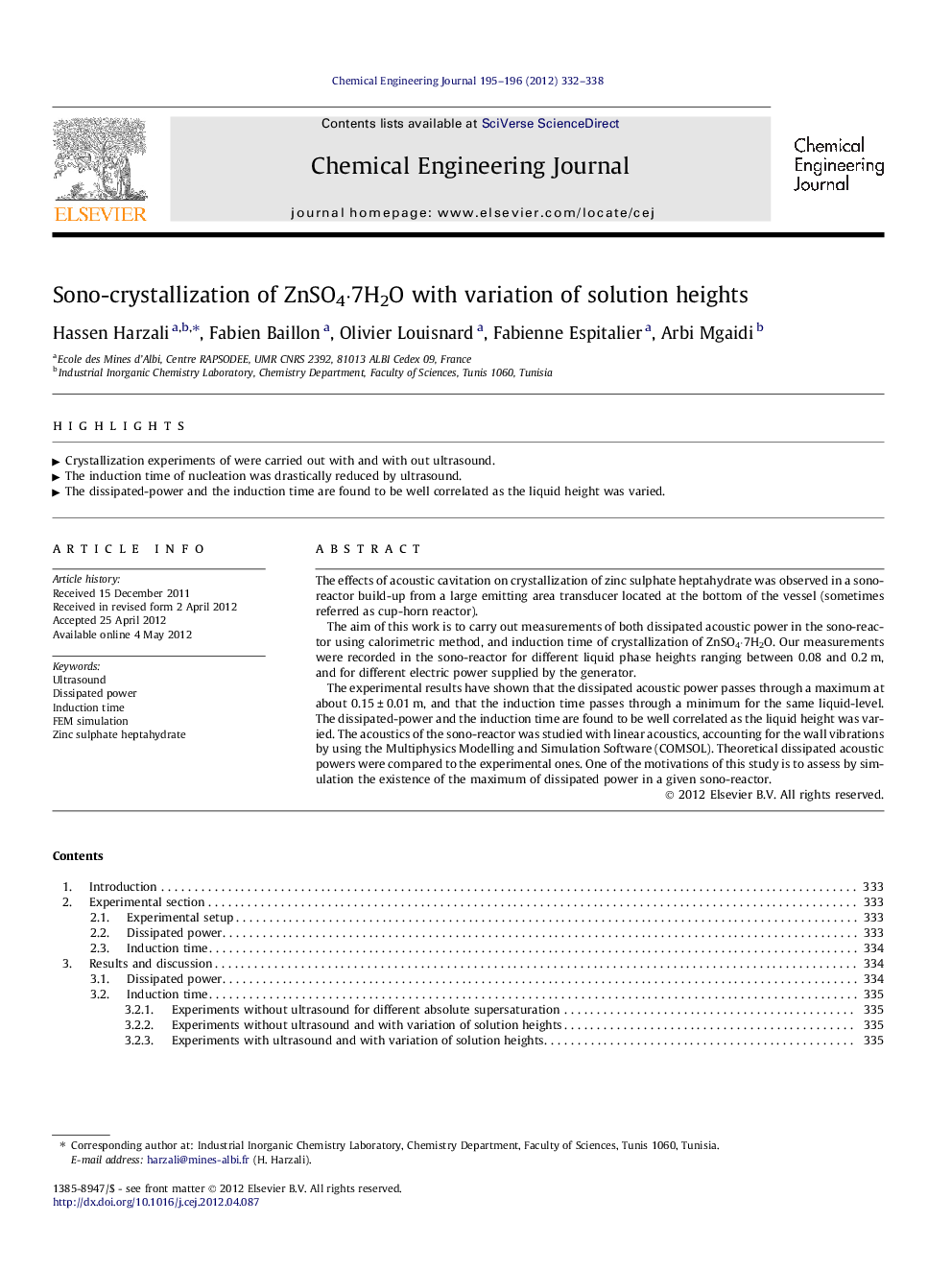| Article ID | Journal | Published Year | Pages | File Type |
|---|---|---|---|---|
| 149769 | Chemical Engineering Journal | 2012 | 7 Pages |
The effects of acoustic cavitation on crystallization of zinc sulphate heptahydrate was observed in a sono-reactor build-up from a large emitting area transducer located at the bottom of the vessel (sometimes referred as cup-horn reactor).The aim of this work is to carry out measurements of both dissipated acoustic power in the sono-reactor using calorimetric method, and induction time of crystallization of ZnSO4⋅7H2O. Our measurements were recorded in the sono-reactor for different liquid phase heights ranging between 0.08 and 0.2 m, and for different electric power supplied by the generator.The experimental results have shown that the dissipated acoustic power passes through a maximum at about 0.15 ± 0.01 m, and that the induction time passes through a minimum for the same liquid-level. The dissipated-power and the induction time are found to be well correlated as the liquid height was varied. The acoustics of the sono-reactor was studied with linear acoustics, accounting for the wall vibrations by using the Multiphysics Modelling and Simulation Software (COMSOL). Theoretical dissipated acoustic powers were compared to the experimental ones. One of the motivations of this study is to assess by simulation the existence of the maximum of dissipated power in a given sono-reactor.
► Crystallization experiments of were carried out with and with out ultrasound. ► The induction time of nucleation was drastically reduced by ultrasound. ► The dissipated-power and the induction time are found to be well correlated as the liquid height was varied.
